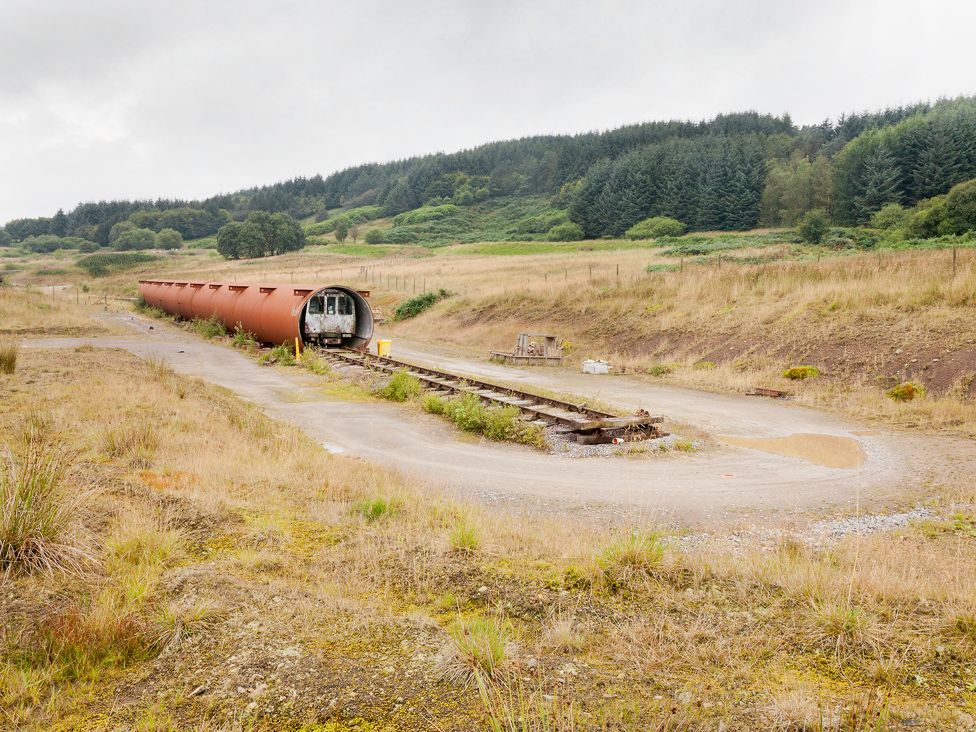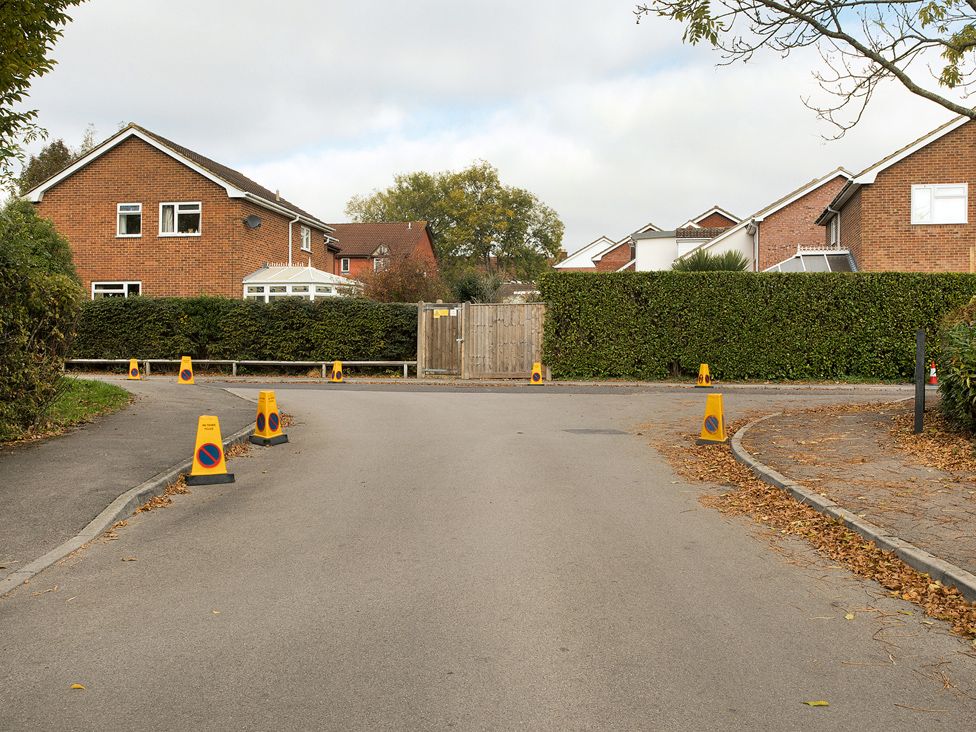Landscapes of chemical and biological warfare
Irish photographer Dara McGrath documents British landscapes associated with chemical and biological warfare.
His work, Project Cleansweep, takes its name from a 2011 Ministry of Defence report on the risk of residual contamination at 14 UK sites used in the manufacture, storage and disposal of chemical and biological weapons.
 DARA MCGRATH
DARA MCGRATH
A railway siding at Kimbolton, Cambridgeshire, was used for the temporary storage and transfer of chemical weapons to forward-filling depots scattered across rural eastern England, for contingency use against an invading German army in World War Two.
Today, it is pasture.
 DARA MCGRATH
DARA MCGRATH
The Valley, an 87-acre (0.3-sq-km) site at Rhydymwyn, Flintshire, was the major centre of manufacture and storage of bulk chemical weapons, such as mustard gas. It was also involved with atomic weapons research.
 DARA MCGRATH
DARA MCGRATH
At its height, during World War Two, 2,200 people worked at the Rhydymwyn facility.
The site closed in 1960. And in 2008, 21 of the buildings and tunnels were listed as ancient scheduled monuments.
 DARA MCGRATH
DARA MCGRATH
At 104 acres, Maintenance Unit 28, at Harpur Hill, Derbyshire, was the largest UK reception and storage depot for chemical weapons during the War.
After the War, the site was used for the disposal of captured chemical weapons, until its closure, in 1960.
 DARA MCGRATH
DARA MCGRATH
In addition to the sites in the report, McGrath identified a further 92 locations.
Gruinard Island, on the north-west coast of Scotland, was the site of the first biological warfare test by British military scientists, in 1942.
 DARA MCGRATH
DARA MCGRATH
Eighty sheep were taken to the island and tethered, while bombs filled with anthrax spores were detonated nearby.
 DARA MCGRATH
DARA MCGRATH
In April 1990, following a four-year decontamination programme, the island was finally declared safe for the public.
 DARA MCGRATH
DARA MCGRATH
In the 1950s, the Chemical Defence Establishment facility at Nancekuke, Cornwall was the main site for the production of nerve agents in the UK.
When it closed, the remains of contaminated buildings and equipment were dumped in mineshafts and quarries on the site.
The former chemical weapons facility is now a military radar station.
 DARA MCGRATH
DARA MCGRATH
Operation Cauldron was a series of secret biological warfare trials in 1952.
Scientists from Porton Down and the Royal Navy released biological agents off the coast of the Isle of Lewis, testing the effects on 3,500 caged guinea pigs and monkeys.
Prior to these tests, a series of mock trials were held at Sandown Bay, on the Isle of Wight.
 DARA MCGRATH
DARA MCGRATH
Similar dispersal trials were held in Lyme Bay, Dorset, between 1963 and 1975.
Part of a wider secret testing programme, they involved the spraying of live and dead bacteria from a boat.
Their spread was then monitored at more than 60 mobile detection sites disguised as monitoring stations for weather and air pollution.
 DARA MCGRATH
DARA MCGRATH
Though the large-scale proliferation of chemical and biological weapons has been stopped by international treaty, the threat of their use remains.
In 2018, the former Russian colonel Sergei Skripal and his daughter, Yulia, were poisoned by the nerve agent Novichok on the door handle of their house.
Dawn Sturgess subsequently lost her life by accidently spraying the compound, from a discarded perfume bottle used in the attack.
An estimated 600 to 800 specially trained military personnel spent 13,000 hours decontaminating the Skripals' house and other sites around Salisbury.
 DARA MCGRATH
DARA MCGRATH
The book Project Cleansweep is available from the publishers Kehrer Verlag.
https://www.bbc.com/news/in-pictures-51615267


Geen opmerkingen:
Een reactie posten